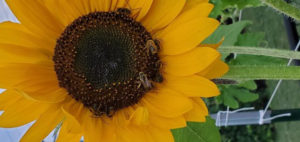Producers in more than 200 counties may be eligible
COLLEGE STATION, Texas, Sept. 12, 2023 – USDA’s Farm Service Agency (FSA) reminds drought impacted producers that they may be eligible for financial assistance through the Emergency Assistance for Livestock, Honeybees, and Farm-Raised Fish Program (ELAP), Livestock Forage Disaster Program (LFP) Emergency Conservation Program (ECP)and Emergency Haying and Grazing on Conservation Reserve Program to provide financial assistance to eligible producers for 2023 grazing losses due to a qualifying drought or fire and provide water for impacted livestock.
“Producers across Texas have been faced with another significant drought year causing considerable economic hardship as they go to great lengths to provide adequate feed, forage and water for their livestock,” said Kelly Adkins, State Executive Director for FSA in Texas. “Producers who are eligible for the much-needed disaster recovery assistance are encouraged to contact their local FSA office to schedule an appointment to apply.”
Emergency Assistance for Livestock, Honeybees, and Farm-Raised Fish Program
For eligible producers in qualifying counties, the ELAP provides financial assistance for:
• the transportation of water to livestock;
• the above normal cost of mileage for transporting feed to livestock; and
• the above normal cost of transporting livestock to forage/grazing acres.*
*No payment for “empty miles.”
Eligible livestock include cattle, bison, goats and sheep, among others, that are maintained for commercial use and located in a county where qualifying drought conditions occur. A county must have had D2 severe drought intensity on the U.S. Drought Monitor for eight consecutive weeks during the normal grazing period, or D3 or D4 drought intensity at any time during the normal grazing period. Producers must have risk in both eligible livestock and eligible grazing land in an eligible county to qualify for ELAP assistance.
Transporting Water, Feed and Livestock
For ELAP water transportation assistance, producers must be transporting water to eligible livestock on eligible grazing land where adequate livestock watering systems or facilities were in place before the drought occurred and where water transportation is not normally required. ELAP covers costs associated with personal labor, equipment, hired labor, and contracted water transportation fees. Cost of the water itself is not covered. The ELAP payment formula uses a national average price per gallon.
ELAP also provides financial assistance to livestock producers who incur above normal expenses for transporting feed to livestock and who are hauling livestock to a new location for feed resources due to insufficient feed or grazing in drought-impacted areas. For transporting feed or hauling livestock, the payment formula excludes the first 25 miles and any mileage over 1,000 miles.
Reimbursement Rates
The reimbursement rate for transporting water, feed, and livestock is 60% of the costs above what would normally have been incurred during the same time period in a normal (non-drought) year. Eligible underserved producers with a CCC-860 underserved producer certification form on filewith FSA may qualify for a 90% reimbursement rate.
An online tool is now available to help ranchers document and estimate payments to cover feed and livestock transportation costs caused by drought and view the demonstration video.
Reporting Losses
Producers must submit a notice of loss to their local FSA office within 30 calendar days of when the loss is apparent. Producers should contact FSA as soon as the loss of water or feed resources are known.
For ELAP eligibility, documentation of expenses is critical. Producers should maintain records and receipts associated with the costs of transporting water to eligible livestock, the costs of transporting feed to eligible livestock, the costs of additional feed purchases, and the costs of transporting eligible livestock to forage or other grazing acres.
The deadline to apply for 2023 ELAP is Jan. 30, 2024.
Livestock Forage Disaster Program
The Livestock Forage Disaster Program (LFP) provides payments to eligible livestock producers and contract growers who also produce forage crops for grazing and suffered losses due to a qualifying drought or fire during the normal grazing period for the county. Eligible livestock include alpacas, beef cattle, buffalo/bison, beefalo, dairy cattle, deer, elk, emus, equine, goats, llamas, ostriches, reindeer, or sheep that have been or would have been grazing the eligible grazing land or pastureland during the normal grazing period.
More than 200 Texas counties have met the drought severity levels that trigger LFP eligibility for the 2023 program year. For LFP, qualifying drought triggers are determined using the U.S. Drought Monitor. A list of eligible counties and grazing crops can be found on the FSA Texas webpage.
To expedite the application process, producers are encouraged to gather and submit records documenting 2023 losses. Supporting documents may include information related to grazing leases, contract grower agreements, and more.
The deadline to apply for 2023 LFP assistance is Jan. 30, 2024.
Emergency Conservation Program
FSA offers cost-share assistance to livestock producers experiencing severe drought conditions where water available for livestock has been reduced below normal to the extent that, without access to additional water, livestock survival is threatened.
Approved practices may include installing pipelines or other facilities for livestock water, constructing and deepening wells for livestock water, installing portable electric pumps and developing springs or seeps for livestock water.
A producer qualifying for ECP assistance may receive cost shares not to exceed 75% of the approved payment scenario rate. Eligible underserved producers with a CCC-860 underserved producer certification form on file with FSA may qualify for a 90% reimbursement rate. Cost-share assistance is limited to $500,000 per person or legal entity per natural disaster.
Additional Drought and Wildfire Recovery Assistance
ELAP assistance is also available to producers impacted by wildfire. Contact the local FSA office for more information on ELAP resources for wildfire losses. Beekeepers can benefit from ELAP provisions and should contact their county FSA office within 15 calendar days of when a loss occurs or is apparent.
The Livestock Indemnity Program (LIP) provides benefits to livestock producers for livestock deaths in excess of normal mortality caused by adverse weather, including wildfire and ECP may also be able to assist with repairing or replacing fencing that was damaged by a wildfire.
The Tree Assistance Program provides cost-share assistance to replant or rehabilitate trees, bushes, or vines lost due to drought. Additionally, ECP funds may be available to help with water needs for vineyards and orchards during severe drought.
The Noninsured Crop Disaster Assistance Program (NAP) provides financial assistance to producers of non-insurable crops to protect against natural disasters that result in lower yields, crop losses or prevents crop planting including crops planted and grown for livestock consumptionsuch as grain and forage crops, including native forage. Eligible producers would have had to have obtained NAP coverage for the crop year in which the qualifying loss occurred.
FSA also offers a variety of direct and guaranteed farm loans, including operating and emergency farm loans, to producers who cannot secure commercial financing. Producers in counties with a primary or contiguous disaster designation may be eligible for low-interest emergency loans to help them recover from production and physical losses. Loans can help producers replace essential property, purchase inputs like livestock, equipment, feed and seed, cover family living expenses or refinance farm-related debts and other needs. Additionally, FSA has a variety of loan servicing options available for borrowers who are unable to make scheduled payments on their farm loan debt to FSA because of reasons beyond their control.
Also, qualifying borrowers can request FSA to cover their next installment due or a recently missed installment. Borrowers who are within two months of their next installment may seek a cash flow analysis from FSA using a recent balance sheet and operating plan to determine their eligibility and can submit requests for cash flow-based assistance in person at their local FSA office or by sending in a direct request using the farmers.gov 22006 assistance request portal at farmers.gov/ira22006cashflow.
More Information
Additional disaster assistance information can be found on farmers.gov, including the Farmers.gov Drought Webpage, Wildfire Webpage, Disaster Assistance Discovery Tool, Disaster Assistance-at-a-Glance fact sheet, and Farm Loan Discovery Tool.
USDA touches the lives of all Americans each day in so many positive ways. Under the Biden-Harris administration, USDA is transforming America’s food system with a greater focus on more resilient local and regional food production, fairer markets for all producers, ensuring access to safe, healthy and nutritious food in all communities, building new markets and streams of income for farmers and producers using climate smart food and forestry practices, making historic investments in infrastructure and clean energy capabilities in rural America, and committing to equity across the Department by removing systemic barriers and building a workforce more representative of America. To learn more, visit usda.gov.
#
USDA is an equal opportunity provider, employer, and lender.


 Insects rarely survive in fossilized form, but a strange series of events somehow killed and preserved these brooding bees for millenniums.
Insects rarely survive in fossilized form, but a strange series of events somehow killed and preserved these brooding bees for millenniums.




 In ancient Greece, bees were used on some of the earliest coins made in Europe. A silver Greek obol coin minted in Macedon between 412 BCE and 350 BCE, now housed in the British Museum, shows a bee on one side of the coin.
In ancient Greece, bees were used on some of the earliest coins made in Europe. A silver Greek obol coin minted in Macedon between 412 BCE and 350 BCE, now housed in the British Museum, shows a bee on one side of the coin. bronze coins issued in Italy from
bronze coins issued in Italy from 




